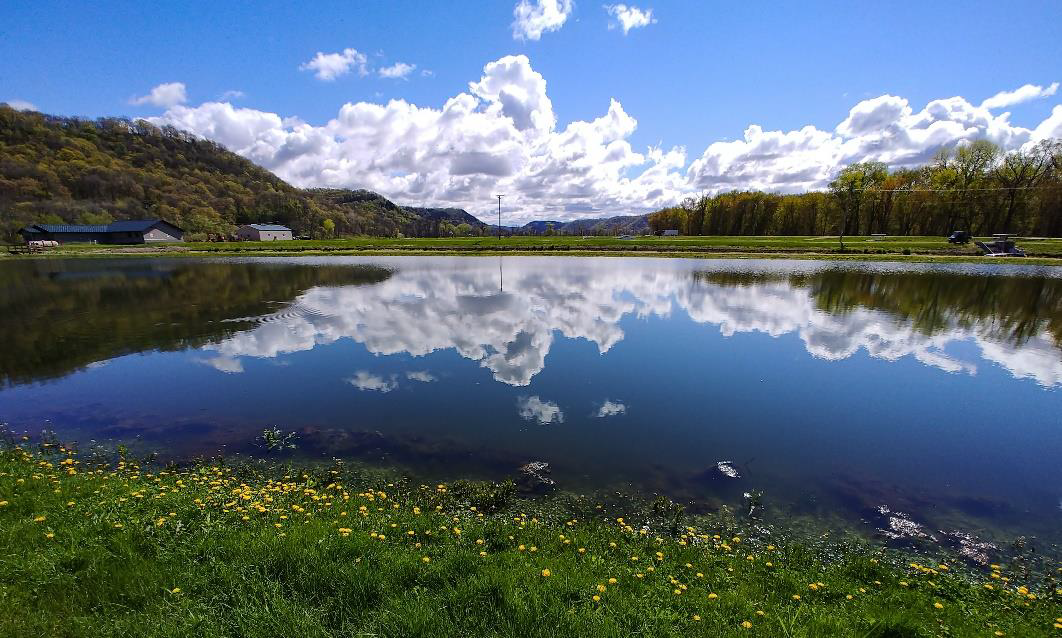
Clouds reflect off a hatchery pond. Photo by Raena Parsons/USFWS
Pond production season is in full swing at Genoa NFH. As a new employee at the hatchery, I’m making my first journey through the annual cycle. I was promised it would be busy and hectic at times, and I haven’t been disappointed. We kicked off the season dividing bloodstock out from their overwintering ponds. The Yellow Perch are the first to take action. We barely got them into their pond in time from the overwintering pond, with eggs and milt running from the fish as they were going into the pond. These will be ready to be harvested in mid-June and sent to their new homes in several state and federal waters. Walleye were next. Once fry were hatched from the egg battery, four production ponds were stocked with around 100,000 fry each towards the end of April. Since then, we have focused on water quality and zooplankton production to start growing these guys up. Phase 1 harvest is underway as of this writing. From there, ponds will be re-stocked at new rates, with any surplus going to state and tribal partners. As waters have warmed, Largemouth Bass, Smallmouth Bass, Bluegill, and Black Crappie have started to do their thing. About 16,000 Smallmouth Bass fry were pulled from the nests in the end of May and restocked into 2 ponds to continue grow out. Soon, it will be time to conduct the phase 1 harvest on the others and divvy them to their new ponds to continue growing. As I take my first trip through a production season, I continue to learn something new every day. I can’t help but ponder the future for these fish. Some may find their way onto somebody’s fishing line and provide a meal or a smile. Some might produce the offspring that somebody catches years down the road. Fun to think about the possibilities! By: Nicholas Bloomfield
Genoa National Fish Hatchery’s mission is to recover, restore, maintain and enhance fish and aquatic resources on a basin-wide and national level by producing over 35 aquatic species of varying life stages, participating in active conservation efforts with our partners, and becoming a positive force in the community by educating future generations on the benefits of conservation stewardship.
